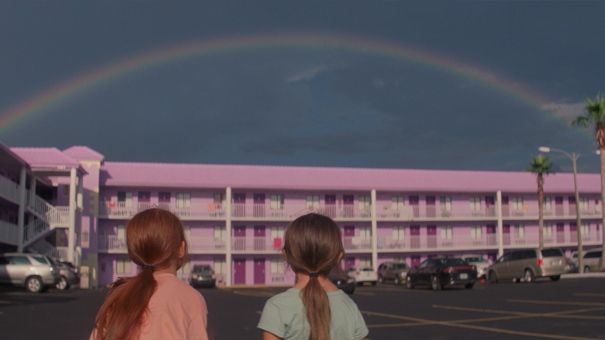 Centering a film on children, especially annoying and mischevious ones, is walking a tight-rope. How far can you take their shenanigans until they become completely unlikeable? Where do you draw the line so their cutesy antics remain “bad but funny” and never go to being actually cruel? Mooney, Jancey, and Scooty, all around the ages of 6, 7, or 8, engage in a wide spectrum of practical jokes, from spitting on peoples cars from the balcony to shutting off the power grid. Yet, they remain the absolute heart and soul of Sean Baker’s The Florida Project, a highlighter-markered dramedy adventure with an incredibly dark undercurrent.
Centering a film on children, especially annoying and mischevious ones, is walking a tight-rope. How far can you take their shenanigans until they become completely unlikeable? Where do you draw the line so their cutesy antics remain “bad but funny” and never go to being actually cruel? Mooney, Jancey, and Scooty, all around the ages of 6, 7, or 8, engage in a wide spectrum of practical jokes, from spitting on peoples cars from the balcony to shutting off the power grid. Yet, they remain the absolute heart and soul of Sean Baker’s The Florida Project, a highlighter-markered dramedy adventure with an incredibly dark undercurrent.
The title of the film is taken from the developmental code-name for Walt Disney World, and its no coincidence because the film lies entirely within the shadow of “the happiest place on Earth”. From rainbows and Disney gift-shops to rich tourists passing by getting scammed by Mooney and her mother Halley into buying stolen park passes, the title becomes a rather darkly comedic joke, juxtaposing the lavish and carefree living of American families on their way to a magical vacation with a community of people barely making ends meet.

For the kids, Disney World is but a distant and unattainable pipe-dream. Instead, their kingdom is a four-story pink motel in Kissimmee, Florida which houses a diverse group of families, many of them poor and struggling. It’s easy to forget the psychological toll that poverty plays on children. Their reckless behavior is hard to sympathize with and understand. The concept of poverty and day-to-day uncertainty in life is so foreign for many us who, like me, grew up in the suburbs in a stable home with a steady income and a virtual guarantee of food, water, a paycheck, and electricity. That these kids act out in a bunch of mischevious ways, curse like sailors, know a lot about sex and genitalia, is not a matter poor parenting as much as it is a matter of them being forced to find entertainment in the real world wherever possible. There are many movies which showcase how children cope with difficult living situations by creating their own worlds and forming their own mythos (the most obvious example here is Pan’s Labyrinth where Ofelia’s adventures with Pan result as a means of coping with death and brutality in Francoist Spain). For Mooney and her gang, the world is their oyster and in a much more serious sense, it’s their coping mechanism for a life that is incredibly unfair for children to have to live.
Sean Baker’s ability to bring a sense of genuine awareness and understanding of the downtrodden without resorting to gross sentimentality and reality TV kitsch is even better developed here than his previous entry Tangerine, an electrifying film about trans prostitutes in Los Angeles. He doesn’t force us to agree or like any of his characters, instead, building their humanity through their day-to-day struggles. Halley does her best at building a life, or really more a shield, for her daughter Mooney who doesn’t really grasp the idea that her mother has to steal and resell wholesale objects and have sex with married men to get food on the table. The constant pestering of the motel manager, a friendly but firm man named Bobby (a fantastic Willem Dafoe) doesn’t help matters. She’s vindictive, violent, a poor role model, and most of all, incredibly spiteful. It’s hard for us to find anything redeeming in Halley’s parenting of Mooney. Yet, their bond and love for each other are never in doubt.
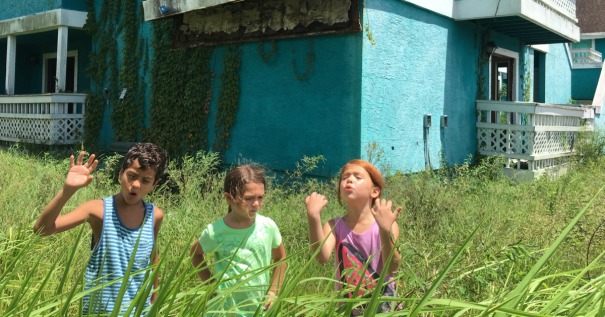
In many ways, Halley is similar to the character of Sin-Dee in Tangerine. Bold and brash, and obnoxious to many faults, but ultimately we come to terms with the fact that their attitude is what kept them going this long. It wasn’t a trait that was built internally, but externally, a product of a fight to survive in a world which has completely discarded them. Baker’s themes of poverty are sewed into every fiber of the film, and The Florida Project‘s greatest moments come from its character’s ability to see the joy and magic in a world that many of us would consider an absolute misery. The movie’s tagline “Find Your Kingdom” is melancholic, because it shouldn’t have to be their kingdom. They deserve better. But for as long as they are there, they might as well stake their claim as the commanders of their world.
IF YOU HAVE NOT SEEN THE FILM YET… STOP READING. SPOILERS BELOW
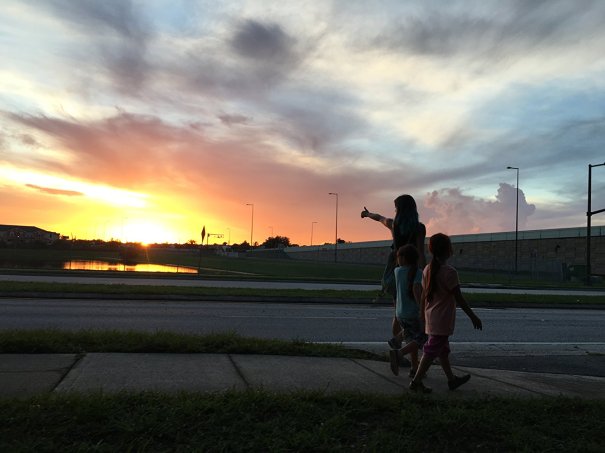
What is going to be one of the most debated and divisive endings since maybe Chris Nolan’s Inception or The Coen Brothers’ No Country for Old Men, the ending of The Florida Project is a jolt of electricity. It looks weird, it feels weird, it ends in a way where we have to slap ourselves and ask, what the fuck just happened? Corey Atab of Slate Magazine wrote a cool piece on why the ending is absolutely PERFECT.
In my personal view, the ending of the film ties back into the concept of “escaping reality” which is a theme that exists in many stories centering around children in difficult situations. The end of the films poses an inescapable and terrifying truth of life, where Mooney is going to be taken permanently away from her mother. We know this is not going to change, we know that there is nothing but ugliness ahead… yet, the children still have hope. Much like the end of Pan’s Labyrinth, where Ofelia’s life screeches to a tragic halt, a devastating conclusion to an existence in fascist Spain that featured war, death, hunger, and not much else… yet, the legend of her friendship with Pan, and her legacy as a Princess in the Kingdom of the Afterlife poses an alternate reality. Is this a cheap twist to squeeze happiness out of misery? The cynical may think so. But children’s minds, their imaginations, their hopes, and dreams are always different than ours. They are shaped by a yet unrelenting and untied belief in good. So when Mooney and Jancey run for their lives towards Disney World and the Magic Kingdom and a legacy build on fairytales and princesses, it isn’t just a naive escape from an inevitable reality, it is a confirmation that whatever may come, they will keep running towards a happy ending.
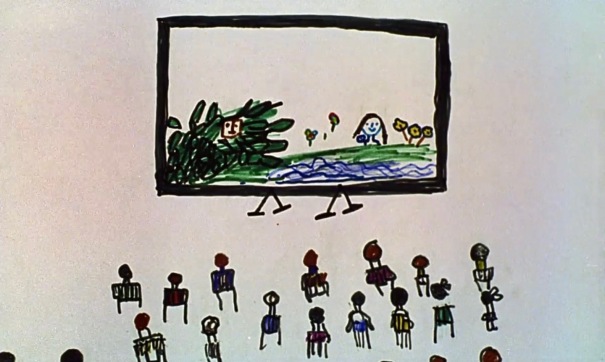
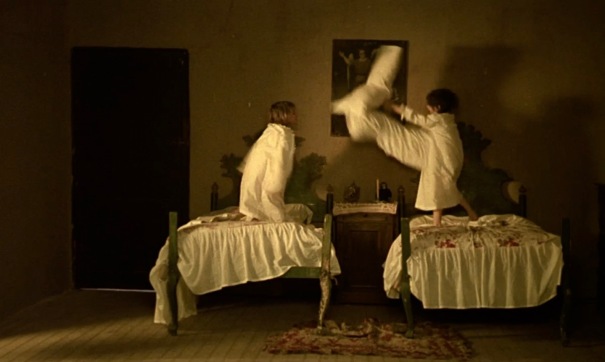





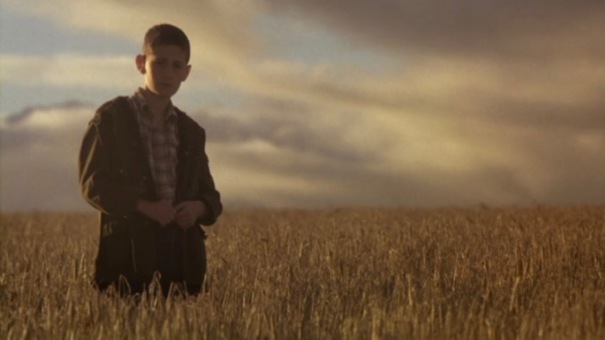
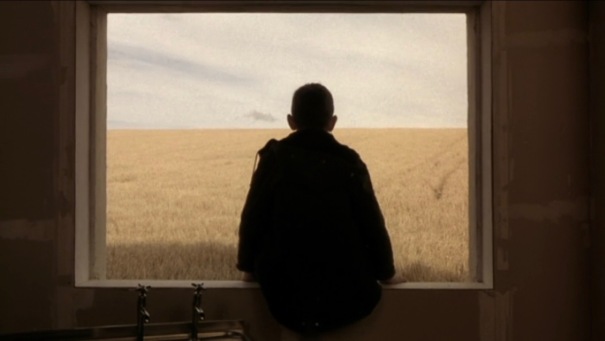
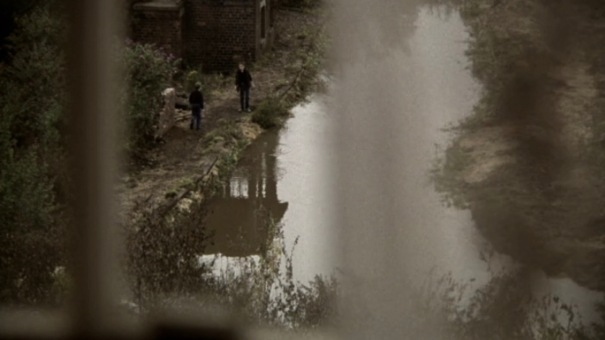 I was reminded of similar other films which depicted in rather matter-of-fact detail the uncompromising lives of kids in destitute situations, namely the early films of Harmony Korine. In Gummo and the controversial Kids, which Korine scripted, the children were abjectly cruel, again, signaled by a seemingly post-apocalyptic setting such as “the recent tornado” which devastated Xenia, Ohio in Gummo. Unlike Korine’s movies however, which tend to revel and take a perverse joy in their lawlessness, Lynn Ramsay’s Ratcatcher remarks on the tragedy of youth as a fight against coming-of-age. It subverts the bildungsroman to suggest that James’ situation, which forced him to mature, lead to his own self-destruction; that his resistance, his naïveté, was what was keeping him alive. He did not feel the utter heartbreak of watching Margarete Anne getting gang-raped until he found love for the first time. He didn’t truly feel loneliness until his friends betrayed him. He did not truly feel guilt until Ryan Quinn’s mother cried over her son’s death on the sidewalk and offered James his old shoes. He did not understand the difficulty of escape until he bought his own bus-ride out of town to a better place. These moments ironically, signaled the maturity of our central character, and yet, were stepping stones to his own demise, his own hopelessness. It is why Ratcatcher is a painfully honest, and remarkable subversion, from beginning to end, of the coming-of-age cliché. It tests our own maturity as film-watchers, film-appreciators, to how we can react to a movie which refuses to treat us like children.
I was reminded of similar other films which depicted in rather matter-of-fact detail the uncompromising lives of kids in destitute situations, namely the early films of Harmony Korine. In Gummo and the controversial Kids, which Korine scripted, the children were abjectly cruel, again, signaled by a seemingly post-apocalyptic setting such as “the recent tornado” which devastated Xenia, Ohio in Gummo. Unlike Korine’s movies however, which tend to revel and take a perverse joy in their lawlessness, Lynn Ramsay’s Ratcatcher remarks on the tragedy of youth as a fight against coming-of-age. It subverts the bildungsroman to suggest that James’ situation, which forced him to mature, lead to his own self-destruction; that his resistance, his naïveté, was what was keeping him alive. He did not feel the utter heartbreak of watching Margarete Anne getting gang-raped until he found love for the first time. He didn’t truly feel loneliness until his friends betrayed him. He did not truly feel guilt until Ryan Quinn’s mother cried over her son’s death on the sidewalk and offered James his old shoes. He did not understand the difficulty of escape until he bought his own bus-ride out of town to a better place. These moments ironically, signaled the maturity of our central character, and yet, were stepping stones to his own demise, his own hopelessness. It is why Ratcatcher is a painfully honest, and remarkable subversion, from beginning to end, of the coming-of-age cliché. It tests our own maturity as film-watchers, film-appreciators, to how we can react to a movie which refuses to treat us like children.